When I worked as a Doorman, I would spend many hours on my feet getting people into and out of the venue. I would be observing and monitoring problems, making sure everyone was safe and sometimes getting physical to remove trouble makers. If you were to observe my posture throughout the night, it would be in constant change. From the upright confident posture needed for the front of house, to the fluidity needed to get through the crowd, to the fighting postures needed to deal with attackers, to the slumped exhaustion after a big night. Each ‘posture’ had its place and purpose, each situation demanded a different position.
Similarly, when I compete in Submission Grappling you will observe a range of postures, from the postures of waiting around for my match (often me led on my back asleep), to the light bouncing in the warm up area, the moment before I walk on the mat and the tactical start position. All would be different and all unique to the requirements of the situation.
Finally, if you were to observe a personal MartialBody Session, you would also see similar variance, sometimes extremely precise and austere postures are required; for instance in stable or connected work. Sometimes natural postures are required, sometimes no postural rules are required at all! Such is the nature of training to build attributes not aesthetics, and the nature of varied goals and objectives.
In this article we will examine the requirements of ‘posture’ and the boxes, trappings and pre-conceived notions that absolutism in regards to postures can produce.
The Postural Rules
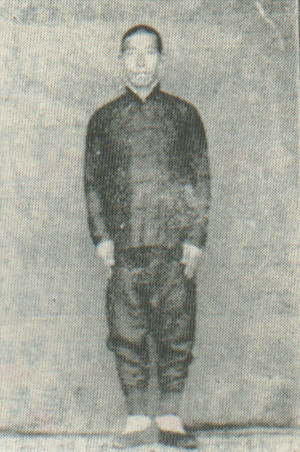 In body method training there are a series of postural ‘requirements’ that can be said to permeate the most variations of the work. Things like spinal alignment, head position, shoulder or scapula position, pelvic alignment, etc. These points of posture are held by some to be absolutes, the markers for good or bad body method. And indeed, many of them are thought to be pre-requisites for the partner work found in some Martial Arts (as we will see shortly, that doesn’t stand up to scrutiny). And indeed many of these points are extremely important in some of the sections of the MartialBody system, the StableBody for instance, is almost entirely concerned with entraining an appreciation of some of these points.
In body method training there are a series of postural ‘requirements’ that can be said to permeate the most variations of the work. Things like spinal alignment, head position, shoulder or scapula position, pelvic alignment, etc. These points of posture are held by some to be absolutes, the markers for good or bad body method. And indeed, many of them are thought to be pre-requisites for the partner work found in some Martial Arts (as we will see shortly, that doesn’t stand up to scrutiny). And indeed many of these points are extremely important in some of the sections of the MartialBody system, the StableBody for instance, is almost entirely concerned with entraining an appreciation of some of these points.
But there is a big trap here for those immersed in these ‘requirements’, and that is to begin to believe they are more than requirements, that they are ‘rules’ for posture. As we have already seen in the introduction, posture is as dictated by circumstance as any other factor. If, prior to a fight with a group of drunks, I were to think about setting up a perfect vertical posture, I would be seriously injured or killed, there is no time, and that position is not optimal.
Indeed, the requirements for posture, should never be considered rules for posture. Instead, the requirements of posture should be viewed as training guides towards a type of postural idealism. They are the ‘qualities’ that we should be practicing in order to bring them into our ‘natural’ posture and this is the painstaking process of developing the habit of postural skill in any position.
The Natural posture
Training in any body method will have some focus on correct mechanics. It doesn’t matter if we are talking about the Olympic 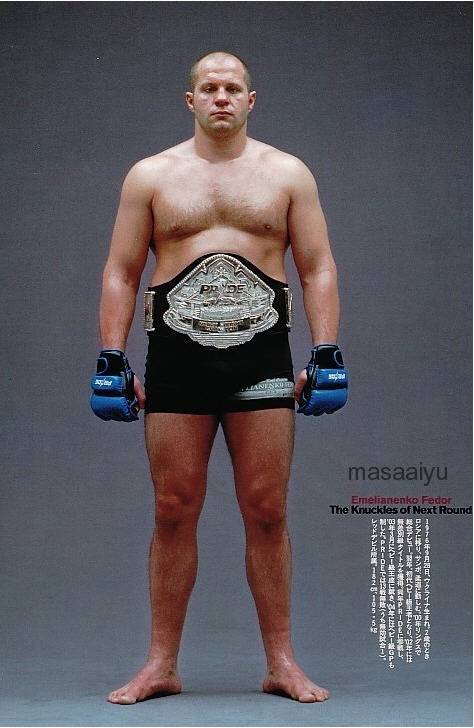 weight lifter or the Taiji Practitioner. They will all need the right mechanics behind their given practice. However, if we are to take a specific body method and apply it as widely as possible in our life, we should be aiming to build the habits into our ‘naturalness’.
weight lifter or the Taiji Practitioner. They will all need the right mechanics behind their given practice. However, if we are to take a specific body method and apply it as widely as possible in our life, we should be aiming to build the habits into our ‘naturalness’.
In relation to posture, this means that over time we begin to build more and more of the qualities of the very strict practice postures into our every day postures. Be that when sitting, standing, working, playing, competing or fighting. This application of postural conditions to the rest of life, the naturalness, is something that is often missed.
I have met people with truly phenomenal posture when practicing, perfectly aligned, hips, spine, shoulders, neck, head … Truly perfect! Then the moment they stop practicing they get on their phone and sling their head forward and collapse their chest. Further when you interact with them, a stiff breeze would knock them down. They had perfect posture but poor naturalness and the skill of posture hadn’t gone inside.
Conversely, I have met extraordinarily powerful individuals, whose form or practicing posture wasn’t particularly special, was even unremarkable, but was the same in every part of their life … and one hit from them would leave you in little doubt as to their effectiveness. This type of depth is the product of developing naturalness of posture. Of pulling the qualities and skills of the training back into our every day, normal, natural positions.
Postural specificity
In the examination of posture we should assess the body based on its ability to perform its required actions. Can the wrestler wrestle, can the striker strike, can the Skier Ski – all without damaging their body through poor mechanics and posture. Even though the posture of the wrestler, striker and skier may be completely different, all should be able to maintain their qualities into the naturalness of the athletes lives.
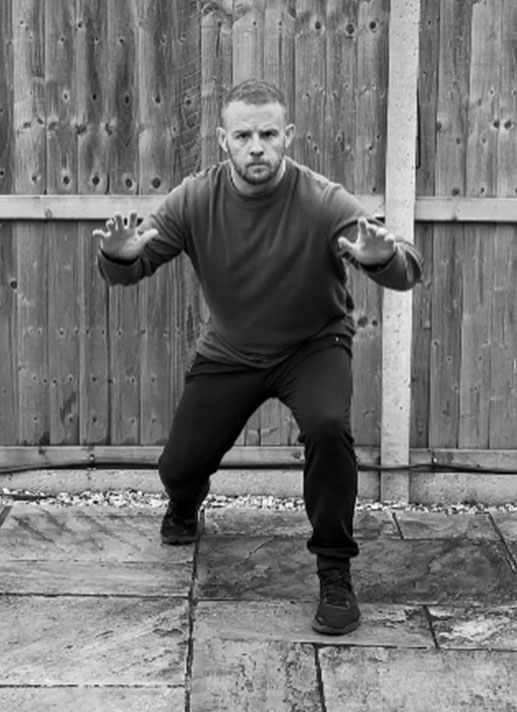 For instance, is the spine and head capable of holding the correct position for the given endeavor? This is one of the most important orientations of the body in order to perform, but again each endeavor will be slightly different. .
For instance, is the spine and head capable of holding the correct position for the given endeavor? This is one of the most important orientations of the body in order to perform, but again each endeavor will be slightly different. .
When performing a given sport, for some the head should be slung forward slightly with the chin tucked, for others the head should be upright, for others the head should be pulled back. Similarly the Spine can take many orientations and positions. For the wrestler, they will usually be heavily inclined forwards, for the striker it could be a slight curve in the spine, for the skier a different orientation is preferred. If we were to assess these peoples ‘natural’ head and spine position outside of their given practice, we would observe varied postural habits, brought about by their practices specificity, but none would prove to be incorrect.
This could also be said for the shoulders, chest, hips, knees, feet, ankles, ribs etc. All will have postural specificity dependent on the athletes goals and objectives. However, when examining training methods to improve general postural qualities we have to move outside of the specificity of sporting or combative requirements and into generalities.
Postural Generalities.
There are a series of training methods, in many different arts, that are designed to engrain postural generalities into our bodies over time. These general qualities are concepts we aim to normalize and naturalize in our everyday posture or position and although the external appearance of the posture will change from training to natural, the internal qualities will remain.
These generalities are things like, head spine alignment, the role and position of the joints, the articulation and action of the body in movement etc. They are usually trained in static or slow moving practices and require a deep level of attention and constant correction to work. The process is long and arduous and can take many years. Especially in the face of desk jobs, phones, tablets and lack of movement so rife in modern society.
Once these generalities are embedded through the precise training, our natural posture will change slightly, but our internal map of the body will be drastically altered. We will begin to naturally form alignment and support in any direction and the emergence of our whole body power will begin to take hold. Externally, our posture may still seem ‘flawed’ when looked at through the lens of perfect practice postures, but internally we will have a newfound body skill.
Comparing Postures.
There is a tendency in some circles to believe that there is a ‘correct’ or ‘incorrect’ universal way to view posture. This is especially pervasive in those practicing arts or methods for which a specific type of posture is the corner stone of their method. This, of course, is false as we have discovered above and many arts and practices will use different postures for effective application of their methods. Lets look at a few examples of how goal or objective can alter our posture.
Training posture
Here we see the open chest, sunk shoulders, curved arms, straight spine, crotch arch and solid base of a training posture. When we are working on these aspects of the StableBody we are constantly searching for better positioning and alignements.
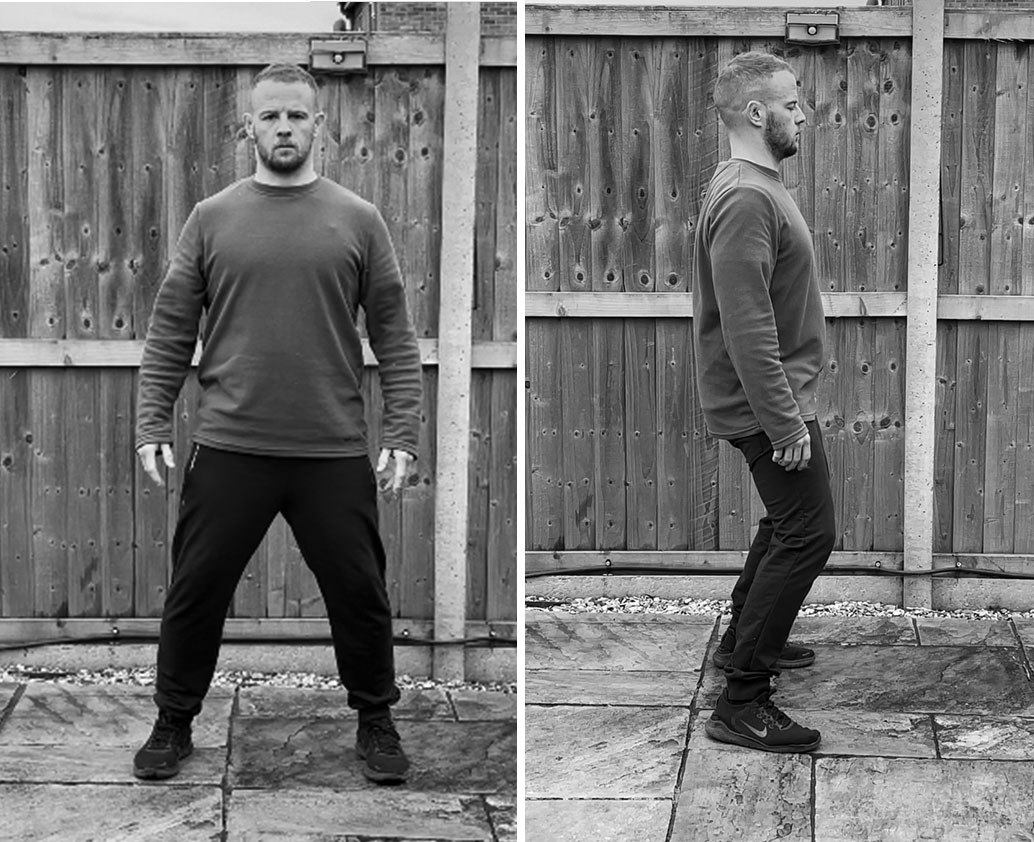
Natural Posture
Here I stand normally, as I would waiting in a store or for a coffee. You can see that some of the aspects of the Training posture carry over into the natural posture which is exactly what we are aiming for. A more pronounced and natural lumbar curve is present and the shoulders have moved forwards slightly among other changes.
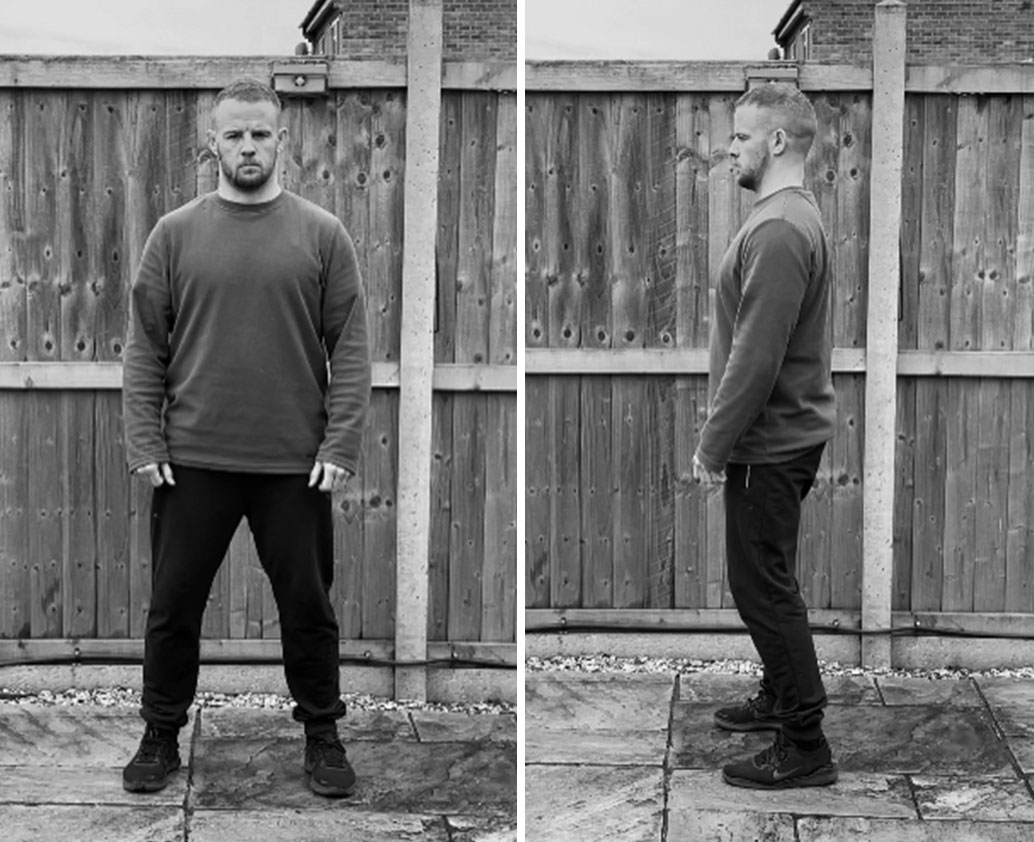
Striking Posture
Here we see the difference in requirement when taking a posture suited to generic striking. In this instance the chin is tucked in to the shoulder, the legs are in a position to advance or retreat with agility.
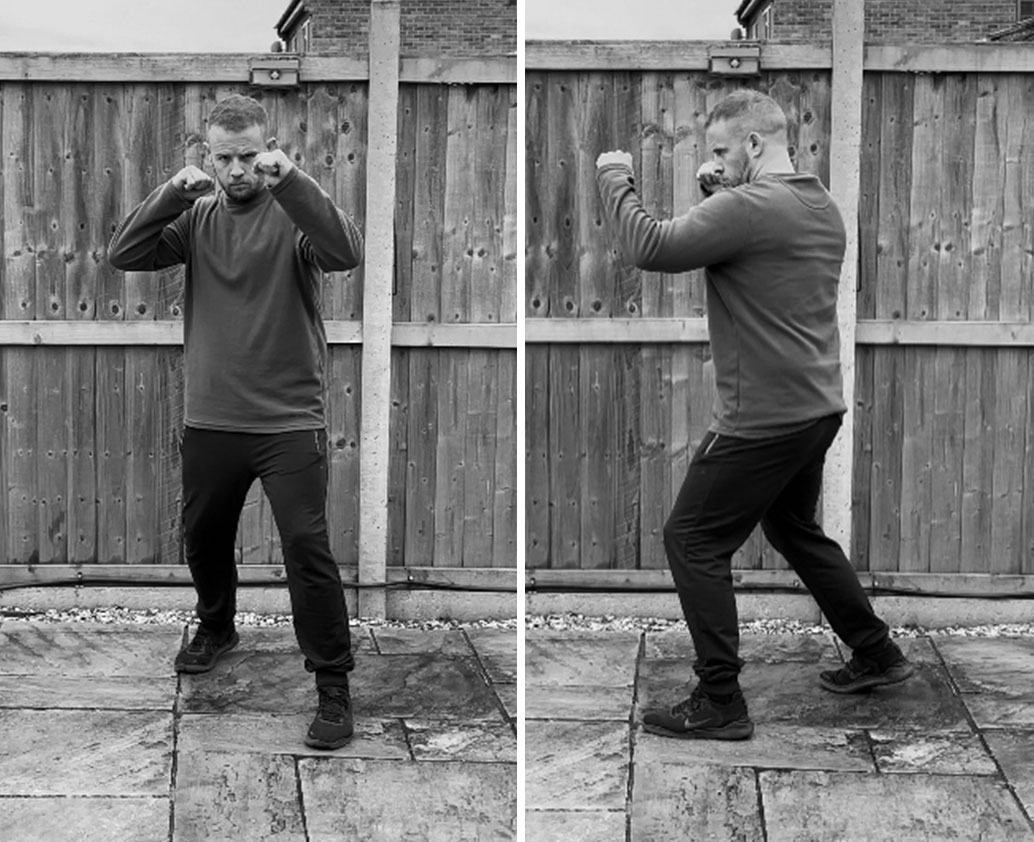
Wrestling / Grappling Posture.
Here we see the trade mark lean and forward focus of a generic preparatory grappling stance. Note the spine 'flatness' even when inclined to increase the power of the spine during a shot or attack, the opening and preparation of the shoulder and scapula area, ready to grab or pull.
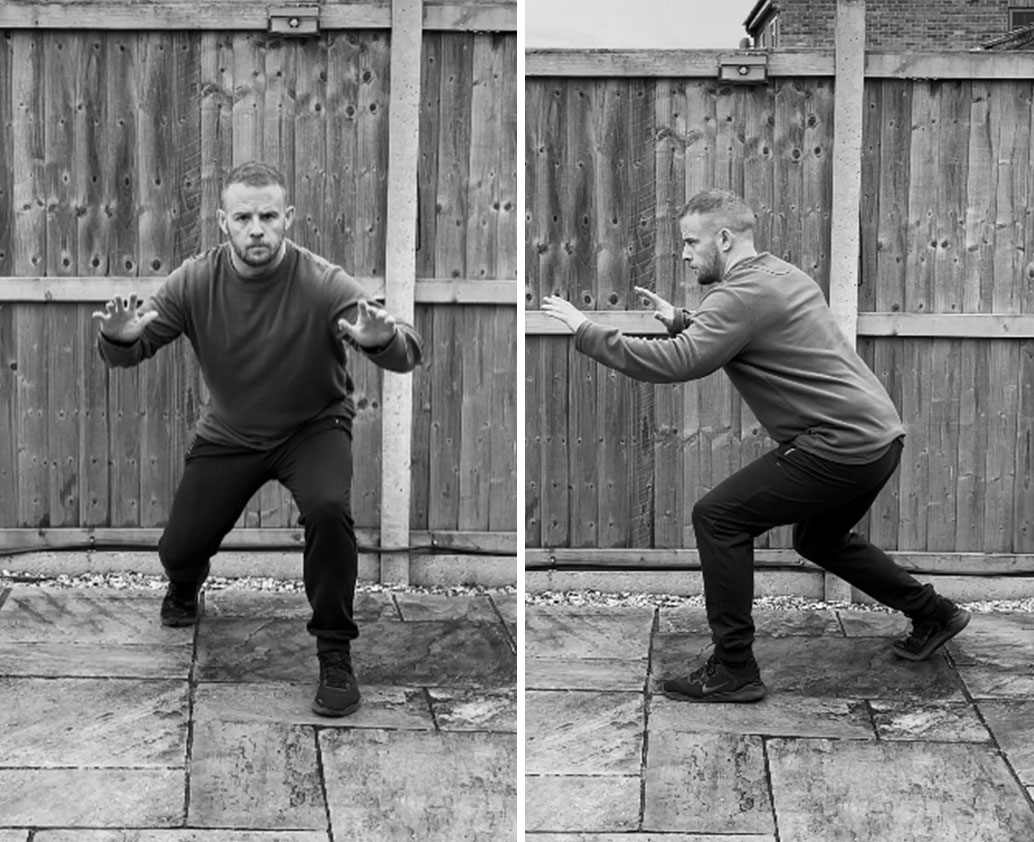
Conversational stance
This is a position I would often use in door work, where I would be able to place my fingers on the chest of the patron without being too close. In this instance the lean is diminished to enhance the ability to deal with sudden attack, and the chin is tucked in and down.
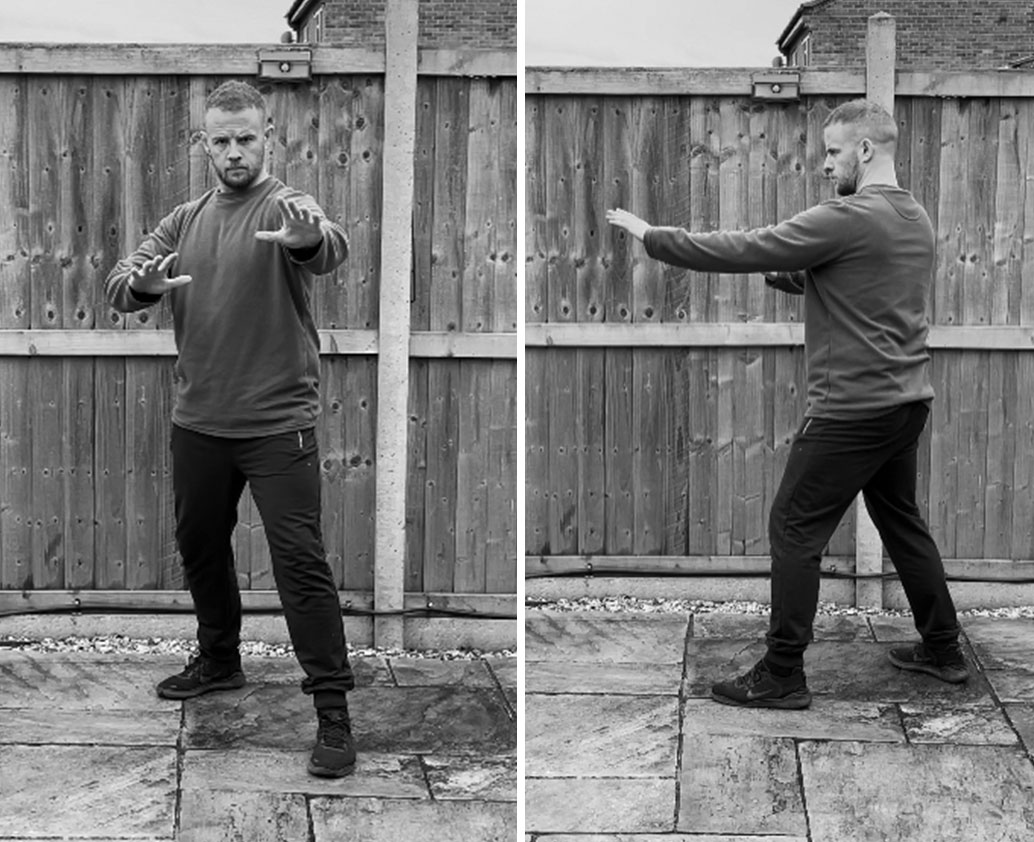
Posture and force – The secret in the open.
Body method training is pervasive in some Martial Arts and Combat systems. Many of these systems have strict rules as to the posture that one should adopt in a martial encounter and are dogmatic in their approach to this subject. However, the big secret, which is ironically out in the open for all to see, is that these strict postural requirements almost always break down the moment un-cooperative or changable levels of force are encountered.
Here we see some Martial Artists, renowned for their focus on body skills, encountering force. These are superlative Martial Artists and I post merely to demonstrate the fallacy of perfect posture, even in those arts which expound such ideals.

Here you can see the common posture adopted by Master Chen Zi Qiang During the following Tai Chi Pushing hands work. It is a great example of the difference between training postures in Chen Style, where extremely upright positioning is a pre-requisit, and the realities of unknown and un-cooporative force.
https://www.youtube.com/watch?v=xq1t82FjdFg

This exchange can be seen at 9.20mins in the following video. Again this is an excellent example of how posture changes in the face of Pressure. Master Tohei was well known for his great body skill and posture.
https://www.youtube.com/watch?v=IedNBqcG0S4
Summary
The study and examination of posture is one that we should all be interested in. Especially if we wish to embed habits that can be transferred into our specific flavour of Martial Art. However, we should not fall into the traps of the absolutism associated with ‘perfect posture. There is, after all, only ‘appropriate posture’. Appropriate for the time, the position, the action, the goal and the method.